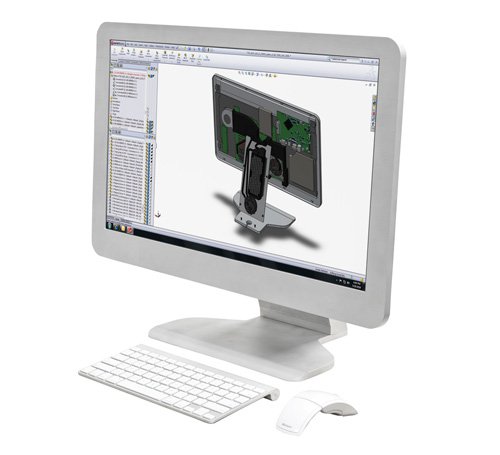Brawn and beauty

The rounded corners, sleek design and white finish give this concept PC an almost iMac-esque look, and at only 58mm deep, it matches the Apple desktop’s profile, too. Don’t let the looks and slim figure fool you into thinking that this machine is style over substance, though. Asetek has managed to squeeze an Intel Core i7 920 processor and an NVIDIA GTX 280M graphics chip behind the 24in display. Knowing that the Core i7 CPU has the same TDP as the six-core 980X, the possibilities are rather tasty.
While many AIO manufacturers use lower-power desktop or mobile CPUs and power-frugal GPUs to keep heat and power usage down, Asetek has, instead, applied its expertise in liquid-cooling to these high-performance parts. The liquid-cooling loop draws heat away from the components mounted behind the screen and down towards the stand, which houses the radiator and fans responsible for cooling the system. Asetek claim that the prototype manages “near-silent operation” while also keeping temperatures to a minimum.
Considering that many AIO PCs use lower-performance laptop or nettop components, we have to respect Asetek’s innovation in this area for enabling desktop-class performance in a small form factor. Sure, we would have liked to see a slightly higher-end graphics chip – the GTX 280M is essentially an underclocked GTS 250 desktop card – but what’s on offer would still manage to run circles around the vast majority of AIOs. More to the point, Asetek has managed to design a relatively powerful PC in a very compact form factor that appears to keep noise and temperature to a minimum. At the end of the day, that’s exactly what most people want from an AIO PC.
“The all-in-one segment of the desktop market is projected to see an annual growth rate of 13% over the next 5 years,” said Ben Bajarin, Consumer Technology Analyst at Creative Strategies, Inc. “Achieving the full potential of this attractive form factor requires PC manufacturers to deliver greater performance at ever more attractive price points. Utilizing desktop processors in these devices is a key strategy for improving price and performance. We see liquid cooling as an enabling technology for OEMs seeking to implement this strategy.”
At the moment this is just a prototype, and Asetek has no plans or timelines to bring it to market. However, we wouldn’t be surprised if a major PC manufacturer licensed the technology in the not-so-distant future to integrate into the next-generation of AIOs.













